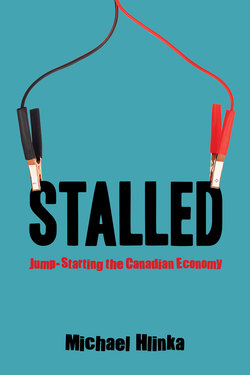Читать книгу Stalled - Michael Hlinka - Страница 8
На сайте Литреса книга снята с продажи.
ОглавлениеA Primer on Fiscal and Monetary Policy
John Maynard Keynes is the most important economist of the twentieth century, and his imprint remains to this day. He came to prominence during the Great Depression, a prolonged slump that — at least according to Keynes — couldn’t be explained by “traditional” economic thinking.
In his day, the consensus was that if the economy went into a slump for any of a variety of reasons, it would self-correct — at worst this would occur in the long term; more likely, it would do so in the short term. The 1930s seemed to disprove the “short term” theory, and Keynes famously quipped, “In the long run, we are all dead.”1 He advanced the theory that government should intervene actively.
When an economy is agriculture-based, Nature determines whether times are good or bad. However, by the 1930s the transition from an agriculture-based economy to a manufacturing-based one had already occurred. Manufacturing, by its nature, is different. There are periods where capacity expands at a strong rate (booms) and times when inventory levels build up and have to be reduced (busts). The latter are accompanied by rising unemployment.
Keynes advanced the proposition that government, with its power to tax and spend, should act in a counter-cyclical manner. If the economy was slow and unemployment was rising, taxes should be cut and spending increased to eliminate the recessionary gap. Then, as things picked up, taxes would naturally increase and spending could be curtailed to balance budgets over the business cycle. The power to change taxes and spending is understood as fiscal policy and is one important tool that public authorities have at their disposal to manage the economy.
Monetary policy is the other tool. The root of the word monetary is money, and monetary policy is all about the cost of money. This is influenced by central banks through their control of interest rates. If I would like a $25,000 loan to renovate my house, I might go to my bank and ask for a line of credit. The bank will tell me what interest rate I’d have to pay. If the interest rate is low, the money I am borrowing is “cheap”; if the interest rate is high, the money is “expensive.”
Monetary policy is very intuitive. If a central bank (in Canada, it’s the Bank of Canada; in the United States, it’s the Federal Reserve) believes that the economy is sluggish, it will react by putting more money into the system. Increasing the supply, everything else being equal, leads to a lower price. Conversely, if the economy is operating past capacity and seems to be inflating, central banks drain liquidity, reducing supply, leading to higher interest rates.
The most important tool at a central bank’s disposal is the bank rate (Canada) or Fed Funds Rate (U.S.). In the course of the day, there is a lot of money sloshing around the system, and banks charge each other based on what the bank rate or Fed Funds Rate is at any given time. They are reference rates on which other interest rates tend to be based.
All central banks give themselves wide discretion with respect to changing the level of interest rates in order to achieve their particular goals. In a perfect world, those goals would always be steady, non-inflationary, real growth, but the world is anything but perfect.
It’s apparent why the political classes embrace Keynesianism, treating it as if it were written on tablets brought down from the Mount. This ideology gives them carte blanche to tinker with the economy in any way, shape, or form. The intellectual fig leaf was provided by Keynes: the economy will not self-correct. Assertion metastasizes into proof. All parties, New Democrat, Liberal, Conservative, Republican, Democrat, sing from the same hymn book. Only their choice of psalm is different.
It’s equally obvious why central bankers embrace activist monetary policy. It justifies their existence. It gives them at least the veneer of importance, and important people can ask to be (and likely will be) well compensated for the “work” they do, even if it adds no real value.
The promise was that activist fiscal and monetary policy would be the solution to the economy’s woes. However, an objective reading of economic history since 1970 tells us that activist fiscal and monetary policy has, in fact, more often been the problem.
